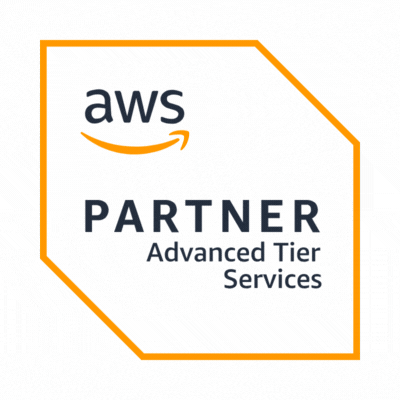In today's data-driven business landscape, analytics is at the heart of strategic decision-making. Enterprises are constantly generating and consuming vast amounts of data, yet the real value lies in how they extract insights from that data to drive informed decisions. To navigate through this vast ocean of data, businesses turn to descriptive, predictive, and prescriptive analytics to make sense of their past, present, and future.
Each of these analytics approaches has a distinct role, yet they complement each other to create a complete data analysis framework that supports better decision-making. In this detailed guide, we will explore how descriptive, predictive, and prescriptive analytics contribute to smarter, faster, and more effective decision-making processes, and how enterprises can leverage these insights to stay ahead in an increasingly competitive market.

The Strategic Importance of Analytics in Modern Enterprises
As companies continue to collect enormous volumes of data, the need for a structured approach to analyzing and leveraging that data is more critical than ever. Analytics offers the ability to identify trends, uncover new opportunities, and mitigate risks—providing organizations with the insight needed to navigate their industries successfully.
By adopting cloud-based analytics platforms, enterprises can process, analyze, and derive real-time insights from data, empowering leaders to make agile, data-backed decisions. We assist businesses in modernizing their data environments and transitioning to the cloud with our cloud migration and cloud modernization services. These services enable businesses to fully utilize descriptive, predictive, and prescriptive analytics within their cloud infrastructure.
Descriptive Analytics - Illuminating the Past
Descriptive analytics is the first step in the analytics hierarchy, offering insights into historical data and providing a foundational understanding of what has occurred in the business. Descriptive analytics aggregates and processes past data to identify trends and patterns, helping organizations visualize performance across different operations and time frames.
What is Descriptive Analytics?
Descriptive analytics focuses on summarizing historical data to identify patterns and trends. It answers questions like:
- What happened?
- Why did it happen?
- What are the key trends?
How Descriptive Analytics Supports Decision Making
Descriptive analytics doesn't predict future events but provides valuable insights into what has worked in the past and where improvements are needed. It helps decision-makers understand:
- Customer behavior: What are the most common purchase patterns?
- Operational performance: Which business processes are underperforming or excelling?
- Market trends: What are the current trends impacting our industry?
These insights empower businesses to make informed decisions on resource allocation, customer engagement, and market positioning.
Our cloud consulting services help organizations set up the necessary infrastructure to centralize their data and implement effective descriptive analytics tools to drive performance and efficiency.

Predictive Analytics - Anticipating the Future
Once businesses understand their historical performance, the next step is using that knowledge to anticipate future trends and behaviors. Predictive analytics helps businesses forecast potential outcomes by analyzing historical data and applying machine learning algorithms and statistical models.
What is Predictive Analytics?
Predictive analytics answers key questions such as:
- What is likely to happen in the future?
- How will current trends evolve?
- What are the potential risks and opportunities?
It relies on historical data and advanced algorithms to predict future outcomes, giving organizations the power to make proactive decisions.
Benefits of Predictive Analytics in Business
By identifying potential future outcomes, predictive analytics helps businesses:
- Forecast demand: Predict customer demand, inventory needs, and market shifts to ensure the business is prepared for future scenarios.
- Optimize resources: Use predictive insights to ensure resources are allocated efficiently across the organization.
- Manage risk: Anticipate potential risks or disruptions in supply chains or markets and develop mitigation strategies ahead of time.
For enterprises looking to integrate predictive analytics capabilities into their operations, cloud operations management solutions provide the tools and frameworks necessary to automate and optimize their infrastructure for predictive decision-making.
Prescriptive Analytics - Driving Actionable Outcomes
Prescriptive analytics takes the insights from descriptive and predictive analytics a step further, providing actionable recommendations. It not only identifies potential future scenarios but also suggests the best course of action for achieving desired outcomes.
What is Prescriptive Analytics?
Prescriptive analytics uses optimization techniques, machine learning, and AI to answer key questions such as:
- What should we do next?
- What is the best strategy to achieve our goals?
- What are the most efficient actions to mitigate risks?
The Role of Prescriptive Analytics in Business
By offering actionable solutions, prescriptive analytics enables businesses to:
- Automate decision-making: Use AI-driven recommendations to automate processes such as supply chain management, pricing strategies, and customer outreach.
- Test different scenarios: Model different scenarios to understand the impact of various decisions and choose the best option for the business.
- Optimize resource usage: Allocate resources more effectively, balancing costs with performance to ensure optimal outcomes.
For organizations looking to integrate prescriptive analytics into their decision-making processes, our data analytics solutions provide the technical expertise and cloud infrastructure necessary to unlock these capabilities.
Comparing Descriptive, Predictive, and Prescriptive Analytics

Each type of analytics has a distinct role in helping businesses make data-driven decisions, but together, they form a comprehensive decision-making framework that ensures businesses can respond effectively to market changes and internal performance insights.
Best Practices for Leveraging Analytics in Decision Making
To maximize the benefits of descriptive, predictive, and prescriptive analytics, businesses must adopt a strategic approach. Here are some best practices to follow:
- Centralize your data: Ensure that all data is collected, stored, and analyzed in a centralized location to enhance data visibility and accessibility. Modernize your infrastructure with cloud migration services to support a seamless analytics environment.
- Invest in cloud infrastructure: As data volumes grow, scalability is essential. By leveraging cloud modernization, businesses can scale their data processing capabilities without significant upfront costs.
- Implement real-time analytics: Businesses should leverage real-time analytics capabilities to gain immediate insights and make agile decisions. Our cloud cost optimization services ensure you have the necessary tools to manage costs while scaling your analytics efforts.
Building a Future-Ready Analytics Strategy
In today’s data-driven world, descriptive, predictive, and prescriptive analytics are critical to making informed, timely, and effective business decisions. These analytics methodologies, when integrated into a cohesive framework, enable organizations to understand past performance, anticipate future trends, and act with confidence.
By partnering with us, businesses can tap into our comprehensive suite of cloud and analytics services, ensuring that they have the right tools, infrastructure, and expertise to unlock the full potential of their data.
For more information on how to transform your business with analytics, visit data analytics to understand more.




















